A Scientist Looks at Velikovsky’s “Worlds in Collision”
Did a near-collision of a comet with earth cause manna to fall in the Sinai and the sun to stand still over Gibeon?
040
041
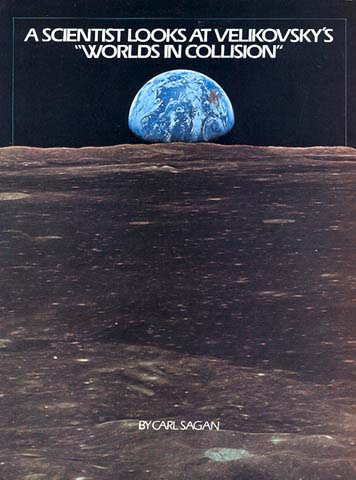
In the spring of 1940 Immanuel Velikovsky’s study of the Biblical accounts of the Exodus led him to conclude that a great physical catastrophe had befallen the earth at the time of Moses. He soon located references to what he believed to be the same event in historical texts, epics, myths, and folklore of a number of ancient peoples. Since conventional scientific theory made no allowance for cataclysms in historical times, Velikovsky began revising astronomy and geology as well as ancient history. The results of his labors were Worlds in Collision (1950) dealing primarily with his theories of cosmic collisions within the solar system during historical times, and Ages in Chaos (1952) which presented his revised synchronisms for ancient history from the fifteenth through the seventh centuries B.C. Later, Velikovsky gave his geological theories more detailed treatment in Earth in Upheaval (1955), and continued his historical revisions in Oedipus and Akhnaton (1960) and Peoples of the Sea (1977).
Velikovsky contends that the miracles connected with the Exodus (the plagues, parting of the Red Sea, pillars of fire and cloud, manna in the desert, etc.) were due to a near collision between earth and a comet. Another near miss a generation later caused a temporary halt in the earth’s rotation, causing the sun to “stand still” (Joshua 10:11–13). These cataclysmic events, he claims, are reflected in other sources as well, including an Egyptian text called the “Admonitions of Ipuwer” which dates from the end of the Middle Kingdom or early in the Hyskos period. The Exodus thus occurred according to Velikovsky at the end of the Middle Kingdom which he places at c. 1450 B.C. (Conventional chronology indicates that the Middle Kingdom ended c. 1750 B.C. and that the Exodus occurred during the New Kingdom, probably in the thirteenth century B.C.) The Egyptian Eighteenth Dynasty which archaeologists and historians normally date c. 1550–1300 B.C. was, Velikovsky claims, contemporaneous with the Israelite United Kingdom and early divided monarchy (c. 1000–850 B.C.). Hatshepsut he equates with the Queen of Sheba who visited Solomon. Thutmose III was Shishak. Amenhotep III and Akhenaton were contemporaries of Jehosephat of Judah and Omri and Ahab of Israel. The Mycenaean Age (usually dated c. 1600–1150 B.C.) is viewed as coeval with the Hebrew divided monarchy of the ninth through the seventh centuries B.C.
The comet that just missed the earth is supposed to have returned in the seventh century B.C. This time it nearly collided with Mars, forcing the red planet out of its orbit and into two near collisions with earth. These near misses produced further catastrophes on earth which annihilated Sennacherib’s army which was besieging Jerusalem at the time. These near misses also caused the collapse of Mycenaean civilization as well as the destruction of numerous Near Eastern cities, including Ugarit (the destruction of Ugarit is usually dated c. 1100 B.C.). Mars then settled into its present orbit, and the comet became the planet Venus.
The publication of Worlds in Collision produced a storm of controversy, especially in the scientific community. Velikovsky’s theories were ridiculed by many leading scientists, and a few even tried to have the book banned from libraries and bookstores. Of course, these unscientific and undemocratic attacks made Velikovsky into something of a martyr. His followers—and sometimes the press—compared him to Galileo, Einstein, Newton, Darwin, Freud and other original thinkers whose theories had been attacked because they violated the dogmas of their times. The conflict between the “establishment” in science, archaeology, and history, on the one hand, and Velikovsky and his supporters, on the other, has continued to the present. The following article considers the scientific validity of the celestial catastrophes proposed in Worlds in Collision.
—William H. Steibing, Jr.
042
Scientists, like other human beings, have their hopes and fears, their passions and despondencies—and their strong emotions may sometime interrupt the course of clear thinking and sound practice. But science is also self-correcting. The most fundamental axioms and conclusions may be challenged. The prevailing hypotheses must survive confrontation with observation. Appeals to authority are impermissible. The steps in a reasoned argument must be set out for all to see. Experiments must be reproducible.
The history of science is full of cases where previously accepted theories and hypotheses have been entirely overthrown, to be replaced by new ideas that more adequately explain the data. While there is an understandable psychological inertia—usually lasting about one generation—such revolutions in scientific thought are widely accepted as a necessary and desirable element of scientific progress. Indeed, the reasoned criticism of a prevailing belief is a service to the proponents of that belief; if they are incapable of defending it, they are well advised to abandon it. This self-questioning and error-correcting aspect of the scientific method is its most striking property, and sets it off from many other areas of human endeavor where credulity is the rule.
Vigorous criticism of the substance of new ideas is a scientific commonplace. Where extraordinary claims are made, we must require extraordinary evidence. Immanuel Velikovsky’s Worlds in Collision attempts to account for a number of events described in the Bible, most notably the Exodus from Egypt and certain events in the book of Joshua, in terms of extraordinary celestial events which also allegedly caused unusual occurrences throughout the ancient world.
Velikovsky’s principal thesis is that major events in the history of both the Earth and the other planets in the solar system have been dominated by catastrophism rather than by uniformitarianism. These are fancy words used by geologists to summarize a major debate they had during the infancy of their science in the late 18th and early 19th centuries. A uniformitarian holds that landforms on Earth have been produced by processes we can observe to be operating today, provided they operate over immense vistas of time. A catastrophist holds that a small number of violent events, occupying much shorter periods of time, are adequate. Catastrophism began largely in the minds of those geologists who accepted a literal interpretation of the Book of Genesis, and in particular the account of the Noahic flood.
It is clearly no use arguing against the catastrophist viewpoint to say that we have never seen such a catastrophe in our lifetimes. The hypothesis requires only rare events. But if we can show that there is adequate time for processes we can all observe operating today to produce the landform or event in question, then there is at least no necessity for the catastrophist hypothesis. Obviously, both uniformitarian and catastrophic processes can have been at work—and almost certainly both were—in the history of our planet.
Velikovsky holds that in the relatively recent history of the Earth there has been a set of celestial catastrophes, near-collisions with comets, small planets and large planets. There is nothing absurd in the possibility of cosmic collisions. Collisions and catastrophism are part and parcel of modern astronomy, and have been for many centuries. For example, in the early history of the solar system, when there were probably many more objects about than there are now—including objects on very eccentric orbits—collisions may have been frequent. Lecar and Franklin in 1973 investigated hundreds of collisions occurring in a period of only a few thousand years in the early history of the asteroid belt, to understand the present configuration of this region of the solar system.1 The Tunguska event of 1908, in which a Siberian forest was leveled, is often attributed to the collision of a small comet with the Earth. The cratered surfaces of Mercury, Mars, Phobos, Deimos and the Moon bear eloquent testimony to the fact that there have been abundant collisions during the history of the solar system. There is nothing unorthodox about the idea of cosmic catastrophes.
What, then, is all the furor about? It is about the time scale and the adequacy of the purported evidence. In the 4.6 billion-year history of the solar system, many collisions must have occurred. But have there been major collisions in the last 3,500 years, and can the study of ancient writings demonstrate such collisions? That is the nub of the issue.
Velikovsky has called attention to a wide range of stories and legends, held by diverse peoples, separated by great distances, which stories show remarkable similarities and concordances. I am not expert in the cultures or languages of any of these peoples, but I find the concatenation of legends Velikovsky has accumulated stunning. It is true that some experts in these cultures are less impressed. I can vividly remember discussing Worlds in Collision with a distinguished professor of Semitics at a leading university. He said something like, “The Assyriology, Egyptology, Biblical scholarship and all of that Talmudic and Midrashic pilpul is, of course, nonsense; but I was impressed by the astronomy.” I had rather the opposite view. But let me not be swayed by the opinions of others. My own position is that if even 20 percent of the legendary concordances that Velikovsky produces are real, there is something important to be explained.
If a variety of widely separated cultures share what is palpably the same legend, how can this be understood? There seem to be four possibilities: common observation, diffusion, brain wiring and coincidence. Let us consider these in turn.
Common Observation: One explanation is that the cultures in question all witnessed a common event and interpreted it in the same way. There may, of course, be more than one view of what this common event was.
Diffusion: The legend originated within 043one culture only, but during the frequent and distant migrations of mankind, gradually spread with some changes among many apparently diverse cultures. A trivial example is the Santa Claus legend in America which evolved from the European Saint Nicholas (Claus is short for Nicholas in German), the patron saint of children, and which ultimately is derived from pre-Christian tradition.
Brain Wiring: A hypothesis sometimes also known as racial memory or the collective unconscious. It holds that certain ideas, archetypes, legendary figures, and stories are intrinsic to human beings at birth, perhaps in the same way that a newborn baboon knows to fear a snake, and a bird raised in isolation from other birds knows how to build a nest. It is apparent that if a tale derived from observation or from diffusion resonated with the “brain wiring,” it is more likely to be culturally retained.
Coincidence: Purely by chance two independently derived legends may have similar content.
If we are to assess critically such apparent concordances, there are some obvious precautions that must first be taken. Do the stories really say the same thing or have the same essential elements? If they are interpreted as due to common observations, do they date from the same period? Can we exclude the possibility of physical contact between representatives of the cultures in question in or before the epoch under discussion? Velikovsky is clearly opting for the common-observation hypothesis, but he seems to dismiss the diffusion hypothesis far too casually; for example, he says (page 303a): “How could unusual motifs of folklore reach isolated islands, where the aborigines do not have any means of crossing the sea?” I am not sure which islands and which aborigines Velikovsky refers to here, but it is apparent that the inhabitants of an island had to have gotten there somehow. I do not think that Velikovsky believes in a separate creation in the Gilbert and Ellice Islands, say. For Polynesia and Melanesia there is now extensive evidence of abundant sea voyages of lengths of many thousands of kilometers within the last millennium, and probably much earlier.
Or how, for example, would Velikovsky explain the fact that the Toltec name for “god” seems to have been teo, as in the great pyramid city of Teotihuacan (“City of the Gods”) near present-day Mexico City, where it is called San Juan Teotihuacan. Teo is a clear cognate of the common Indoeuropean root for “god,” preserved, among other places, in the words “deity” and “theology.” Toltec and Nahuatl are non-Indoeuropean languages, and it seems unlikely that the word for “god” would be wired into all human brains. There is no common celestial event that could conceivably explain this concordance. The preferred hypotheses in this case are coincidence or diffusion. There is some evidence for pre-Columbian contact between the Old and New Worlds. But coincidence is also not to be taken lightly: If we compare two languages, each with tens of thousands of words, spoken by human beings with identical larynxes, tongues and teeth, it should not be surprising if a few words are coincidentally identical. Likewise, we should not be surprised if a few elements of a few legends are coincidentally identical. But I believe that all of the concordances Velikovsky produces can be explained away in this manner.
Let us take an example of Velikovsky’s approach to this question. He points to certain concordant stories, directly or vaguely connected with celestial events, that refer to a witch, a mouse, a scorpion or a dragon (pages 77, 264, 305, 306, 310). His explanation: divers comets, upon close approach to the Earth, were tidally or electrically distorted and gave the form of a witch, a mouse, a scorpion or a dragon, clearly interpretable as the same animal to culturally isolated peoples of very different backgrounds. No attempt is made to show that such a clear form—for example, a woman riding a broomstick and topped by a pointed hat—could have been produced in this way, even if we grant the hypothesis of a close approach to the Earth by a comet. Our experience with Rorschach and other psychological projective tests is that different people see the same nonrepresentational image in different ways. Velikovsky even goes so far as to believe that a close approach to the Earth by “a star” he evidently identifies with the planet Mars so distorted it that it took on the clear shape (page 264) of lions, jackals, dogs, pigs and fish; and in his opinion this explains the worship of animals by the Egyptians. This is not very impressive reasoning. We might just as well assume that the whole menagerie was capable of independent flight in the second millennium B.C. and be done with it. A much more likely hypothesis is diffusion. Indeed, I have in a different context spent a fair amount of time studying the dragon legends on the planet Earth, and I am impressed at how different these mythical beasts, all called dragons by Western writers, really are.
Another problem with Velikovsky’s method is the suspicion that vaguely similar stories may refer to quite different periods. This question of the synchronism of legends is almost entirely ignored in Worlds in Collision, although it is treated in some of Velikovsky’s later works. For example (page 91), Velikovsky recites vaguely similar discussions of vulcanism and lava flows in Greek, Mexican and Biblical traditions. But he makes no attempt to show that these traditions refer to even approximately comparable times and, since lava has flowed in historical times in all three areas, no common outside or exogenous event is necessary to interpret such stories.
With the situation in legend and myth as fuzzy as this, any corroboratory evidence from other sources of an exogenous event would be welcomed by those who support Velikovsky’s argument. I am struck, however, by the absence of any confirming evidence in art. There is a wide range of paintings, bas-reliefs, cylinder seals and other objets d’art produced by humanity going back to at least 10,000 B.C. They represent all of the subjects, especially mythological subjects, important to the cultures that created them. Astronomical events are not uncommon in such works 044of art. Recently impressive evidence has been uncovered in cave paintings in the American Southwest of contemporary observations of the Crab Supernova event of the year 1054, which was also recorded in Chinese, Japanese and Arab annals. But supernovab events are not nearly so impressive as the close approach of another planet with attendant interplanetary tendrils and lightning discharges connecting it to Earth. If the Velikovskian catastrophes occurred, why are there no contemporary graphic records of them?
I therefore cannot find the legendary base of Velikovsky’s hypothesis at all compelling. If, nevertheless, his notion of recent planetary collisions and global catastrophism were strongly supported by physical evidence, we might be tempted to give it some credence. If the physical evidence is not, however, very strong, the mythological evidence will surely not stand by itself.
Let me give a short summary of my understanding of the basic features of Velikovsky’s principal hypothesis. I will relate it to the events described in the Book of Exodus, although the stories of many other cultures are said to be consistent with the events described in Exodus:
The planet Jupiter disgorged a large comet, which made a grazing collision with Earth around 1500 B.C. The various plagues and Pharaonic tribulations of the Book of Exodus all derive directly or indirectly from this cometary encounter. Material which made the river Nile turn to blood drops from the comet. The vermin described in Exodus are produced by the comet—flies and perhaps scarabs drop out of the comet, while indigenous terrestrial frogs are induced by the heat of the comet to multiply. Earthquakes produced by the comet level Egyptian but not Hebrew dwellings. (The only thing that does not seem to drop from the comet is cholesterol to harden Pharaoh’s heart.)
All this evidence falls from the coma [the nebulous envelope around a cometary nucleus] of the comet, because at the moment Moses lifts his rod and stretches out his hand, the “Red Sea” parts—due either to the gravitational tidal field of the comet or to some unspecified electrical or magnetic interaction between the comet and the “Red Sea.” Then, when the Hebrews have successfully crossed, the comet has evidently passed sufficiently farther on for the parted waters to flow back and drown the host of Pharaoh. The Children of Israel during their subsequent forty years of wandering in the Wilderness of Sin are nourished by manna from heaven, which turns out to be hydrocarbons (or carbohydrates) from the tail of the comet.
Another reading of Worlds in Collision makes it appear that the plagues and the Red Sea events represent two different passages of the comet, separated by a month or two. When, after the death of Moses, the mantle of leadership is passed to Joshua, the same comet comes screeching back for another grazing collision with the Earth. At the moment that Joshua says “Sun, stand thou still upon Gibeon; and thou, Moon, in the valley of Ajalon,” the Earth—perhaps because of tidal interaction again, or perhaps because of an unspecified magnetic induction in the crust of the earth—obligingly ceases its rotation, to permit Joshua victory in battle. The comet then makes a near-collision with Mars, so violent as to eject it out of its orbit so it makes two near-collisions with the Earth which destroy the army of Sennacherib, the Assyrian king, as he was making life miserable for some subsequent generation of Israelites about 700 B.C. The net result was to eject Mars into its present orbit and the comet into a circular orbit around the Sun, where it became the planet Venus—which previously, Velikovsky believes, did not exist. The Earth meantime had somehow begun rotating again at almost exactly the same rate as before these encounters. No subsequent aberrant planetary behavior has occurred since about the seventh century B.C., although it might have been common in the second millennium.
That this is a remarkable story no one—proponents and opponents alike—will disagree. Whether it is a likely story is, fortunately, amenable to scientific inquiry. Velikovsky’s hypothesis makes certain predictions and deductions: that comets are ejected from planets; that comets are likely to make near or grazing collisions with planets; that vermin live in comets and in the atmospheres of Jupiter and Venus; that carbohydrates can be found in the same places; that enough carbohydrates fell in the Sinai peninsula for nourishment during forty years of wandering in the desert; that eccentric cometary or planetary orbits can be circularized in a period of hundreds of years; that volcanic and tectonic events on Earth and impact events on the Moon were contemporaneous with these catastrophes; and so on. I will discuss each of these ideas.
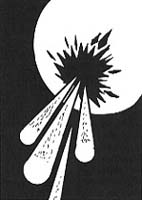
Problem I: The Ejection of Venus by Jupiter
Velikovsky’s hypothesis begins with an event that has never been observed by astronomers and that is inconsistent with much that we know about planetary and cometary physics, namely, the ejection of an object of planetary dimensions from Jupiter, perhaps by its collision with some other giant planet. Such a propagation of catastrophes, Velikovsky promised, would be “the theme of the sequel of Worlds in Collision” 045(page 373). Thirty years later, no sequel of this description has appeared.
It can be demonstrated that any event that would result in the ejection of a comet or a planet from Jupiter would have brought the comet to a temperature of at least several thousands of degrees. Whether the comet was composed of rocks, ices or organic compounds, this heat would have entirely reduced it to a rain of self-gravitating small dust particles and atoms, which does not describe the planet Venus particularly well.
Another problem is that the escape velocity from the Sun’s gravity at the distance of Jupiter is about 20 km/sec. The ejection mechanism from Jupiter does not, of course, know this. Thus, if the comet leaves Jupiter at velocities less than about 60 km/sec, the comet will fall back to Jupiter; if greater than about 63 km/sec, it will escape from the solar system. There is only a narrow and therefore unlikely range of velocities consistent with Velikovsky’s hypothesis.
A further problem is that the mass of Venus is very large—more than 5 × 1027 grams, or possibly larger originally, on Velikovsky’s hypothesis, before it passed close to the Sun. The total kinetic energy required to propel Venus to Jovian escape velocity is then easily calculated to be on the order of 1041 ergs, which is equivalent to all the energy radiated by the Sun to space in an entire year, and one hundred million times more powerful than the largest solar flare ever observed. We are asked to believe, without any further evidence or discussion, an ejection event vastly more powerful than anything on the Sun, which is a far more energetic object than Jupiter.
Any process that makes large objects also makes many small objects. This is especially true in a situation dominated by collisions, as in Velikovsky’s hypothesis. Here the comminution physics is well-known: a particle one-tenth as large as our biggest particle should be a hundred or a thousand times more abundant. Indeed, Velikovsky has stones falling from the skies in the wake of his hypothesized planetary encounters, and imagines Venus and Mars trailing swarms of boulders; the Mars swarm, he says, led to the destruction of Sennacherib. But if this is true, if we had near-collisions with objects of planetary mass only thousands of years ago, we should have been bombarded by objects of lunar mass hundreds of years ago; and bombardment by objects that can make craters a mile or so across should be happening every second Tuesday. Yet there is no sign, on either the Earth or the Moon, of frequent recent collisions with such lower-mass objects. Instead, the few objects that, as a steady-state population, are moving in orbits that might collide with the Moon are just adequate, over geological time, to explain the number of craters observed on the lunar lowland plains. The absence of a great many small objects with orbits crossing the orbit of the Earth is another fundamental objection to Velikovsky’s basic thesis.
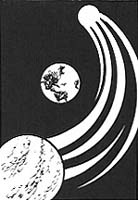
Problem II: Repeated Collisions Among the Earth, Venus and Mars
“That a comet may strike our planet is not very probable, but the idea is not absurd” (page 40). This is precisely correct: it remains only to calculate the probabilities, which Velikovsky has unfortunately left undone.
Fortunately, the relevant physics is extremely simple and can be performed to order of magnitude even without any consideration of gravitation. Objects on highly eccentric orbits, traveling from the vicinity of Jupiter to the vicinity of the Earth, are traveling at such high speeds that their mutual gravitational attraction to the object with which they are about to have a grazing collision plays a negligible role in determining the trajectory. A single “comet” with aphelion (far point from the Sun) near the orbit of Jupiter and perihelion (near point to the Sun) inside the orbit of Venus should take at least 30 million years before it impacts the Earth.
The odds against a collision with the Earth in any given year is then 3 × 107 to 1; the odds against it in any given millennium are 30,000 to 1. But Velikovsky has (see, e.g., page 388) not one but five or six near-collisions among Venus, Mars and the Earth—all of which seem to be statistically independent events; that is, by his own account, there does not seem to be a regular set of grazing collisions determined by the relative orbital periods of the three planets. (If there were, we would have to ask the probability that so remarkable a play in the game of planetary billiards could arise within Velikovsky’s time constraints.) If the probabilities are independent, then the joint probability of five such encounters in the same millennium is on the short side of (3 × 107/103)-5 = (3 × 104)-5 = 4.1 × 10-23, or almost 100 billion trillion to 1 odds. For six encounters in the same millennium the odds rise to (3 × 107/103)-6 = (3 × 104)-6 = 7.3 × 10-28, or about a trillion quadrillions to 1 odds. Actually, these are lower limits—both for the reason given above and because close encounters with Jupiter are likely to eject the impacting object out of the solar system altogether, rather as Jupiter ejected the Pioneer 10 spacecraft. These odds are a proper calibration of the validity of Velikovsky’s hypothesis, even if there were no other difficulties with it. Hypotheses with such small odds in their favor are usually said to be untenable. With the other problems mentioned both 046above and below, the probability that the full thesis of Worlds in Collision is correct becomes negligible.
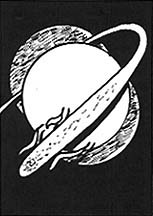
Problem III: The Earth’s Rotation
Much of the indignation directed toward Worlds in Collision seems to have arisen from Velikovsky’s interpretation of the story of Joshua and related legends as implying that the Earth’s rotation was once braked to a halt. It is true that a gradual deceleration of the Earth’s rotation could occur in a period of time of much less than a day. No one would fly off, and even stalactites and other delicate geomorphological forms could survive. The energy required to brake the Earth is not enough to melt it, although it would result in a noticeable increase in temperature: the oceans would have been raised to the boiling point of water, an event that seems to have been overlooked by Velikovsky’s ancient sources.
These are not, however, the most serious objections to Velikovsky’s exegesis of Joshua. Perhaps the most serious is at the other end: How does the Earth get started up again, rotating at approximately the same rate of spin? The Earth cannot do it by itself, because of the law of the conservation of angular momentum. Velikovsky does not even seem to be aware that this is a problem.
Nor is there any hint that braking the Earth to a “halt” by cometary collision is any less likely than any other resulting spin. In fact, the chances of precisely canceling the Earth’s rotational angular momentum in a cometary encounter is tiny; and the probability that subsequent encounters, were they to occur, would start the Earth spinning again even approximately once every twenty-four hours is tiny squared.
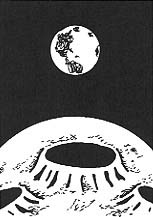
Problem IV: Terrestrial Geology and Lunar Craters
Reasonably enough, Velikovsky believes that a near-collision of another planet with the Earth might have had dramatic consequences here—by gravitational tidal, electrical or magnetic influences (Velikovsky is not very clear on this). He believes (pages 96 and 97) “that in the days of the Exodus, when the world was shaken and rocked … all volcanoes vomited lava and all continents quaked.” (My emphasis.)
There seems little doubt that earthquakes would have accompanied such a near-collision. Apollo lunar seismometers have found that moonquakes are most common during lunar perigee, when the Earth is closest to the Moon, and there are at least some hints of earthquakes at the same time. But the claim that there were extensive lava flows and volcanism involving “all volcanoes” is quite another story. Volcanic lavas are easily dated, and what Velikovsky should produce is a histogram of the number of lava flows on Earth as a function of time. Such a histogram will, I believe, show that not all volcanoes were active between 1500 and 600 B.C., and that there is nothing particularly remarkable about the volcanism of that epoch.
Velikovsky believes (page 115) that reversals of the geomagnetic field are produced by cometary close approaches. Yet the record from rocky magnetization is clear—such reversals occur about every million years, and not in the last few thousand, and they recur more or less like clockwork.
Velikovsky’s contention that mountain building occurred a few thousand years ago is belied by all the geological evidence, which puts those times at tens of millions of years ago and earlier.
Velikovsky believes that the Moon, not immune to the catastrophes which befell the Earth, had similar tectonic events occur on its surface a few thousand years ago, and that many of its craters were formed then (see Part 2, Chapter 9). There are some problems with this idea as well: samples resumed from the Moon in the Apollo missions show no rocks melted more recently than a few hundred million years ago.
Furthermore, if lunar craters were to have formed abundantly 2,700 or 3,500 years ago, there must have been a similar production at the same time of terrestrial craters larger than a kilometer across. Erosion on the Earth’s surface is inadequate to remove any crater of this size and age; indeed, there is not a single one. On these questions, Velikovsky seems to have ignored the critical evidence. When the evidence is examined, it strongly counterindicates his hypothesis.
Velikovsky believes that the close passage of Venus or Mars to the Earth would have produced tides at least miles 047high (pages 70 and 71); in fact, if these planets were ever tens of thousands of kilometers away, as he seems to think, the tides, both of water and of the solid body of our planet, would be hundreds of miles high. This is easily calculated from the height of the present water and body lunar tide. To the best of my knowledge, there is no geological evidence for a global inundation of all parts of the world at any time between the sixth and fifteenth centuries B.C. If such floods had occurred, even if they were brief, they should have left some clear trace in the geological record. And what of the archaeological and paleontological evidence? Where are the extensive faunal extinctions of the correct date as a result of such floods?
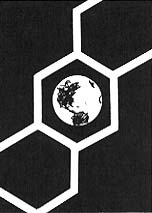
Problem V: Chemistry and Biology of the Terrestrial Planets
Velikovsky’s thesis has some peculiar biological and chemical consequences, which are compounded by some straightforward confusions on simple matters. He seems not to know (page 16) that oxygen is produced by green-plant photosynthesis on Earth. He makes no notes of the fact that Jupiter is composed primarily of hydrogen and helium, while the atmosphere of Venus, which he supposes to have arisen inside of Jupiter, is composed almost entirely of carbon dioxide. These matters are central to his ideas and pose them very grave difficulties. Velikovsky holds that the manna that fell from the skies in the Sinai peninsula was of cometary origin and therefore that there are carbohydrates on both Jupiter and Venus. On the other hand, he quotes copious sources for fire and naphtha [petroleum] falling from the skies, which he interprets as celestial petroleum ignited in the Earth’s oxidizing atmosphere (pages 53 through 58). Because Velikovsky believes in the reality and identity of both sets of events, his book displays a sustained confusion of carbohydrates and hydrocarbons; and at some points he seems to imagine that the Israelites were eating motor oil rather than divine nutriment during their forty years’ wandering in the desert.
Reading the text is made still more difficult by the apparent conclusion (page 366) of Martian polar caps made of manna, which are described ambiguously as “probably in the nature of carbon.” Carbohydrates have a strong 3.5 micron infrared absorption feature, due to the stretching vibration of the carbon-hydrogen bond. No trace of this feature was observed in infrared spectra of the Martian polar caps taken by the Mariner 6 and 7 spacecraft in 1969. On the other hand, Mariner 6, 7 and 9 and Viking 1 and 2 have acquired abundant and persuasive evidence for frozen water and frozen carbon dioxide as the constituents of the polar caps.
Velikovsky’s insistence on a celestial origin of petroleum is difficult to understand. Some of his references, for example, in Herodotus, provide perfectly natural descriptions of the combustion of petroleum upon seepage to the surface in Mesopotamia and Iran. As Velikovsky himself points out (pages 55–56), the fire-rain and naphtha stories derive from precisely those regions of the Earth that have natural petroleum deposits. There is, therefore, a straightforward terrestrial explanation of the stories in question. It is also very difficult to understand from his hypothesis how it is, if oil fell from the skies in 1500 B.C., that petroleum deposits are intimately mixed with chemical and biological fossils of tens to hundreds of millions of years ago. But this circumstance is readily explicable if, as most geologists have concluded, petroleum arises from decaying vegetation of the Carboniferous periods and other early geological epochs, and not from comets.
Even stranger are Velikovsky’s views on extraterrestrial life. He believes that much of the “vermin,” and particularly the flies referred to in Exodus, really fell from his comet—although he hedges on the extraterrestrial origin of frogs while approvingly quoting from the Iranian text, the Bundahis (page 183), which seems to admit a rain of cosmic frogs. Let us consider flies only. Shall we expect houseflies or Drosophila melanogaster in forthcoming explorations of the clouds of Venus and Jupiter? He is quite explicit: “Venus—and therefore also Jupiter—is populated by vermin” (page 369). Will Velikovsky’s hypothesis fall if no flies are found?
The idea that, of all the organisms on Earth, flies alone are of extraterrestrial origin is curiously reminiscent of Martin Luther’s exasperated conclusion that, while the rest of life was created by God, the fly must have been created by the Devil because there is no conceivable practical use for it. But flies are perfectly respectable insects, closely related in anatomy, physiology and biochemistry to the other insecta. The possibility that 4.6 billion years of independent evolution on Jupiter—even if it were physically identical to the Earth—would produce a creature indistinguishable from other terrestrial organisms is to misread seriously the evolutionary process. Flies have the same enzymes, the same nucleic acids and even the same genetic code (which translates nucleic acid information into protein information) as do all the other organisms on Earth. There are too many intimate associations and identities between flies and other terrestrial organisms for them to have separate origins, as any serious investigation clearly shows.
In Exodus, Chapter 9, it is said that the cattle of Egypt all died, but of the cattle of the Children of Israel there “died not one.” In the same chapter we find a plague 048that affects flax and barley but not wheat and rye. This fine-tuned host-parasite specificity is very strange for cometary vermin with no prior biological contact with Earth, but is readily explicable in terms of home-grown terrestrial vermin.
Then there is the curious fact that flies metabolize molecular oxygen. There is no molecular oxygen on Jupiter, nor can there be, because oxygen is thermodynamically unstable in an excess of hydrogen. Are we to imagine that the entire terminal electron transfer apparatus required for life to deal with molecular oxygen was adventitiously evolved on Jupiter by Jovian organisms hoping someday to be transported to Earth? This would be yet a bigger miracle than Velikovsky’s principal collisional thesis. Velikovsky makes (page 187) a lame aside on the “ability of many small insects … to live in an atmosphere devoid of oxygen,” which misses the point. The question is how an organism evolved on Jupiter could live in and metabolize an atmosphere rich in oxygen.
Next there is the problem of fly ablation. Small flies have just the same mass and dimensions as small meteors, which are burned up at an altitude of about 100 kilometers when they enter the Earth’s atmosphere on cometary trajectories. Not only would cometary vermin be transformed rapidly into fried flies on entrance into the Earth’s atmosphere; they would, as cometary meteors are today, be vaporized into atoms and never “swarm” over Egypt to the consternation of the Pharaoh. Likewise, the temperatures attendant to ejection of the comet from Jupiter, referred to above, would fry Velikovsky’s flies. Impossible to begin with, doubly fried and atomized, cometary flies do not well survive critical scrutiny.
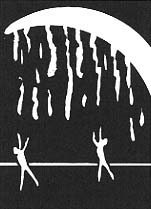
Problem VI: Manna
Manna, according to the etymology in Exodus, derives from the Hebrew words manhu, which means “What is it?” Indeed, an excellent question! The idea of food falling from comets is not absolutely straightforward. Optical spectroscopy of comet tails, even before Worlds in Collision was published (1950), showed the presence of simple fragments of hydrocarbons, but no aldehydes—the building blocks of carbohydrates. They may nevertheless be present in comets. From the passage of Comet Kohoutek near the Earth, however, it is now known that comets contain large quantities of hydrogen cyanide and methyl cyanide. These are poisons, and it is not immediately obvious that comets are good to eat.
But let us put this objection aside, grant Velikovsky his hypothesis, and calculate the consequences. How much manna is required to feed the hundreds of thousands of Children of Israel for forty years (see Exodus, Chapter 16, Verse 35)?
In Exodus, Chapter 16, Verse 20, we find that the manna left overnight was infested by worms in the morning—an event possible with carbohydrates but extremely unlikely with hydrocarbons. Moses may have been a better chemist than Velikovsky. This event also shows that manna was not storable. It fell every day for forty years according to the Biblical account. We will assume that the quantity that fell every day was just sufficient to feed the Children of Israel, although Velikovsky assures us (page 138) from Midrashic sources that the quantity that fell was adequate for two thousand years rather than a mere forty. Let us assume that each Israelite ate on the order of a third of a kilogram of manna per day, somewhat less than a subsistence diet. Then each will eat 100 kilograms per year and 4,000 kilograms in forty years. Hundreds of thousands of Israelites, the number explicitly mentioned in Exodus, will then consume something over a million kilograms of manna during the forty years’ wandering in the desert. But we cannot imagine the debris from the cometary tail falling each day,c preferentially on the portion of the Wilderness of Sin in which the Israelites happened to have wandered. This would be no less miraculous than the Biblical account taken at face value. The area occupied by a few hundred thousand itinerant tribesmen, wandering under a common leadership, is, very roughly, several times 10-7 the area of the Earth. Therefore, during the forty years of wandering, all of the Earth must have accumulated several times 10-5 grams of manna, or enough to cover the entire surface of the planet with manna to a depth of about an inch. If this indeed happened, it would certainly be a memorable event, and may even account for the gingerbread house in “Hansel and Gretel.”
Now, there is no reason for the manna 049to have fallen only on Earth. In forty years the tail of the comet, if restricted to the inner solar system, would have traversed some 1031 km. Making only a modest allowance for the ratio of the volume of the Earth to the volume of the tail, we find that the mass of manna distributed to the inner solar system by this event is larger than 1025 grams. This is not only more massive by many orders of magnitude than the most massive comet known; it is already more massive than the planet Venus. But comets cannot be composed only of manna. (Indeed, no manna at all has been detected so far in comets.) Comets are known to be composed primarily of ices, and a conservative estimate of the ratio of the mass of the comet to the mass of the manna is much larger than 103. Therefore, the mass of the comet must be much larger than 1031 grams. This is the mass of Jupiter. If we were to accept Velikovsky’s Midrashic source above, we would deduce that the comet had a mass comparable to that of the Sun. Interplanetary space in the inner solar system should even today be filled with manna. I leave it to the reader to make his own judgment on the validity of Velikovsky’s hypothesis in the light of such calculations.
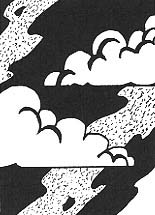
Problem VII: The Clouds of Venus
Velikovsky’s prognostications that the clouds of Venus were made of hydrocarbons or carbohydrates has many times been hailed as an example of a successful scientific prediction. Velikovsky says (page X) that “the presence of hydrocarbon gases and dust in the cloud envelope of Venus would constitute a crucial test” for his ideas. On the same page Velikovsky quotes himself as saying, “On the basis of this research, I assume that Venus must be rich in petroleum gases,” which seems to be an unambiguous reference to the components of natural gas, such as methane, ethane, ethylene and acetylene.
As I pointed out many years ago, the vapor pressure of simple hydrocarbons in the vicinity of the visible clouds of Venus should make them detectable if they comprise the clouds. They were not detectable then, and in the intervening years, despite the use of a wide range of analytic techniques, neither hydrocarbons nor carbohydrates have been found there.
Moreover, the question of the composition of the Venus clouds—a major enigma for centuries—was solved not long ago.2 The clouds of Venus are composed of an approximately 75 percent solution of sulfuric acid. These recently observed features of Venus’ atmosphere are inconsistent with the hypothesis of hydrocarbon or carbohydrate clouds.
With such organic clouds now so thoroughly discredited, why do we hear about space-vehicle research having corroborated Velikovsky’s thesis? Because of erroneous reports mistakenly given out in the wake of the first successful American interplanetary spacecraft, Mariner 2, which in 1962 flew by Venus. This erroneous report was later erroneously copied and repeated.
Neither Mariner 2 nor any subsequent investigation of the Venus atmosphere has found evidence for abundant hydrocarbons or carbohydrates, in gas, liquid or solid phase.
Velikovsky’s idea that the clouds of Venus are composed of hydrocarbons or carbohydrates is incorrect. The “crucial test” fails.
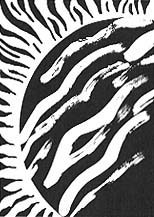
Problem VIII: The Temperature of Venus
Another curious circumstance concerns the surface temperature of Venus. While the high temperature of Venus is often quoted as a successful prediction and a support of Velikovsky’s hypothesis, the reasoning behind his conclusion and the consequences of his arguments do not seem to be widely known nor discussed.
Let us begin by considering Velikovsky’s views on the temperature of Mars (pages 367–368). He believes that Mars, being a relatively small planet, was more severely affected in its encounters with the more massive Venus and Earth, and therefore that Mars should have a high temperature. He proposes that the mechanism may be “a conversion of motion into heat,” which is a little vague, since heat is precisely the motion of molecules or, much more fantastic, by “interplanetary electrical discharges” which “could also initiate atomic fissions with ensuing radioactivity and emission of heat.”
In the same section, he baldly states, 050“Mars emits more heat than it receives from the Sun,” in apparent consistency with his collision hypothesis. This statement is, however, dead wrong. The temperature of Mars has been measured repeatedly by Soviet and American spacecraft and by ground-based observers, and the temperatures of all parts of Mars are just what is calculated from the amount of sunlight absorbed by the surface. What is more, this was well known in the 1940s, before Velikovsky’s book was published. And while he mentions four prominent scientists who were involved before 1950 in measuring the temperature of Mars, he makes no reference to their work, and explicitly and erroneously states that they concluded that Mars gave off more radiation than it received from the Sun.
It is difficult to understand this set of errors, and the most generous hypothesis I can offer is that Velikovsky confused the visible part of the electromagnetic spectrum, in which sunlight heats Mars, with the infrared part of the spectrum, in which Mars largely radiates to space. But the conclusion is clear. Mars, even more than Venus, by Velikovsky’s argument, should be a “hot planet.” Had Mars proved to be unexpectedly hot, perhaps we would have heard of this as a further confirmation of Velikovsky’s views. But when Mars turns out to have exactly the temperature everyone expected it to have, we do not hear of this as a refutation of Velikovsky’s views. There is a planetary double standard at work.
When we now move on to Venus, we find rather similar arguments brought into play. I find it odd that Velikovsky does not attribute the temperature of Venus to its ejection from Jupiter (see Problem I, above), but he does not. Instead, we are told, because of its close encounter with the Earth and Mars, Venus must have been heated, but also (page 77) “the head of the comet … had passed close to the Sun and was in a state of candescence.” Then, when the comet became the planet Venus, it must still have been “very hot” and have “given off heat” (page ix). Again pre-1950 astronomical observations are referred to (page 370), which show that the dark side of Venus is approximately as hot as the bright side of Venus, to the level probed by middle-infrared radiation. Here Velikovsky accurately quotes the astronomical investigators, and from their work deduces (page 371) “the night side of Venus radiates heat because Venus is hot.” Of course!
What I think Velikovsky is trying to say here is that his Venus, like his Mars, is giving off more heat than it receives from the Sun, and that the observed temperatures on both the night and day sides are due more to the “candescence” of Venus than to the radiation it now receives from the Sun. But this is a serious error. The fraction of sunlight reflected by Venus is entirely consistent with the observed infrared temperature of the clouds of Venus; that is to say, the clouds of Venus are precisely at the temperature expected on the basis of the amount of sunlight that is absorbed there.
Velikovsky proposed that both Venus and Mars give off more heat than they receive from the Sun. He is wrong for both planets.
Velikovsky proposed that Venus is hot because of its encounters with Mars and the Earth, and its close passage to the Sun. Since Mars is not anomalously hot, the high surface temperature of Venus must be attributed primarily to the passage of Venus near the Sun during its cometary incarnation. But it is easy to calculate how much energy Venus would have received during its close passage to the Sun and how long it would take for this energy to be radiated away into space. This calculation shows that all of this energy is lost in a period of months to years after the close passage to the Sun, and that these is no chance of any of that heat being retained at the present time in Velikovsky’s chronology. Velikovsky does not mention how close to the Sun Venus is supposed to have passed, but a very close passage compounds the already extremely grave collision physics difficulties outlined in Problem II.
A repeated claim by Velikovsky is that Venus is cooling off with time. As we have seen, he attributes its high temperature to solar heating during a close solar passage. In many publications Velikovsky compares published temperature measurements of Venus, made at different times, and tries to show the desired cooling. An unbiased presentation of the microwave brightness temperatures of Venus—the only non-spacecraft data that apply to the surface temperature of the planet—demonstrates that there is not the faintest hint of a decline in Venus’ temperature with time. Similar results apply to measurements, in the infrared part of the spectrum, of Venus’ cloud temperatures: they do not decline with time.
The high surface temperature of Venus is another of the so-called proofs of the Velikovsky hypothesis. We find, however, that (1) the temperature in question was never specified; (2) the mechanism proposed for providing this temperature is grossly inadequate; and (3) the surface of the planet does not cool off with time as advertised.
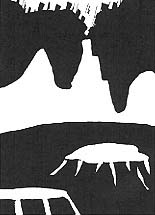
Problem IX: The Craters and Mountains of Venus
In 1973 an important aspect of the surface of Venus, verified by many later observations, was discovered by Dr. Richard Goldstein and associates, using the Goldstone radar observatory of the Jet 051Propulsion Laboratory. They found, from radar that penetrates Venus’ clouds and is reflected off its surface, that the planet is mountainous in places and cratered abundantly; perhaps, like parts of the Moon, saturation-cratered—i.e., so packed with craters that one crater overlaps the other. Because successive volcanic eruptions tend to use the same lava tube, saturation cratering is more characteristic of impact than of volcanic cratering mechanisms. This is not a conclusion predicted by Velikovsky, but that is not my point. These craters, like the craters in the lunar maria (plural for Latin mare, “sea”), on Mercury and in the cratered regions of Mars, are produced almost exclusively by the impact of interplanetary debris. Large crater-forming objects are not dissipated as they enter the Venus atmosphere, despite its high density. Now, the colliding objects cannot have arrived at Venus in the past ten thousand years; otherwise, the Earth would be as plentifully cratered. The most likely source of these collisions is the Apollo objects (asteroids whose orbits cross the orbit of the Earth) and small comets. But for them to produce as many craters as Venus possesses, the cratering process on Venus must have taken billions of years. Alternatively, the cratering may have occurred more rapidly in the very earliest history of the solar system, when interplanetary debris was much more plentiful. There is no way for it to have happened recently. On the other hand, if Venus was, several thousand years ago, in the deep interior of Jupiter, there is no way it could have accumulated such impacts there. The clear conclusion from the craters of Venus is, therefore, that Venus has for billions of years been an object exposed to interplanetary collisions—in direct contradiction to the fundamental premise of Velikovsky’s hypothesis.
Worlds in Collision is an attempt to validate Biblical and other folklore as history, if not theology. I have tried to approach the book with no prejudgments. I find the mythological concordances fascinating, and worth further investigation, but they are probably explicable on diffusionist or other grounds. The scientific part of the text, despite all the claims of “proofs,” runs into many more than the preceding nine very grave difficulties.
In science, an acceptable argument must have a clearly set forth chain of evidence. If a single link in the chain is broken, the argument fails. In the case of Worlds in Collision, we have the opposite case: virtually every link in the chain is broken. To rescue the hypothesis requires special pleading, the vague invention of new physics, and selective inattention to a plethora of conflicting evidence. Accordingly, Velikovsky’s basic thesis seems to me clearly untenable on physical grounds.
Moreover, there is a dangerous potential problem with the mythological material. The supposed events are reconstructed from legends and folktales. But these global catastrophes are not present in the historical records or folklore of many cultures. Such strange omissions are accounted for, when they are noted at all, by “collective amnesia.” Velikovsky wants it both ways. Where concordances exist, he is prepared to draw the most sweeping conclusions from them. Where concordances do not exist, the difficulty is dismissed by invoking “collective amnesia.” With so lax a standard of evidence, anything can be “proved.”
With these enormous liabilities, how is it that Worlds in Collision has been so popular? Here I can only guess. For one thing, it is an attempted validation of religion. The old Biblical stories are literally true, Velikovsky tells us, if only we interpret them in the right way. The Jewish people, for example, saved from Egyptian Pharaohs, Assyrian kings and innumerable other disasters by obliging cometary interventions, had every right, he seems to be saying, to believe themselves chosen. Velikovsky attempts to rescue not only religion but also astrology: the outcomes of wars, the fates of whole peoples, are determined by the positions of the planets. In some sense, his work holds out a promise of the cosmic connectedness of mankind. There are, without a doubt, profound cosmic connections—as I have tried to demonstrate elsewhere—but Velikovsky’s thesis is not one of them.
The outrage that seems to have seized many otherwise placid scientists upon colliding with Worlds in Collision has produced a chain of consequences. Some people are quite properly put off by the occasional pomposity of scientists, or are concerned by what they apprehend as the dangers of science and technology, or perhaps merely have difficulty understanding science. They may take some comfort in seeing scientists get their lumps.
In the entire Velikovsky affair, the only aspect worse than the shoddy, ignorant and doctrinaire approach of Velikovsky and many of his supporters was the disgraceful attempt by some who called themselves scientists to suppress his writings. For this, the entire scientific enterprise has suffered. Velikovsky makes no serious claim of objectivity or falsifiability. There is at least nothing hypocritical in his rigid rejection of the immense body of data that contradicts his arguments. But scientists are supposed to know better, to realize that ideas will be judged on their merits if we permit free inquiry and vigorous debate.
To the extent that scientists have not given Velikovsky the reasoned response his work calls for, we have ourselves been responsible for the propagation of Velikovskian confusion. But scientists cannot deal with all areas of borderline science. The thinking, calculations and preparation of my reservations about Velikovsky’s notions, for example, took badly needed time away from my own research. But it was certainly not boring, and at the very least I had a brush with many an enjoyable legend.
The attempt to rescue old-time religion, in an age which seems desperately to be seeking some religious roots, some cosmic significance for mankind, may or may not be creditable. I think there is much good and much evil in the old-time religions. But I do not understand the need for half-measures. If we are forced to choose between them—and we decidedly are not—is the evidence not better for the God of Moses, Jesus and Muhammed than for the comet of Velikovsky?
(For further details, see Chapter 7 of Broca’s Brain by Carl Sagan (Random House, 1979).)
In the spring of 1940 Immanuel Velikovsky’s study of the Biblical accounts of the Exodus led him to conclude that a great physical catastrophe had befallen the earth at the time of Moses. He soon located references to what he believed to be the same event in historical texts, epics, myths, and folklore of a number of ancient peoples. Since conventional scientific theory made no allowance for cataclysms in historical times, Velikovsky began revising astronomy and geology as well as ancient history. The results of his labors were Worlds in Collision (1950) dealing primarily with his theories of […]
You have already read your free article for this month. Please join the BAS Library or become an All Access member of BAS to gain full access to this article and so much more.
Already a library member? Log in here.
Institution user? Log in with your IP address or Username
Footnotes
The page numbers refer to the canonical English-language edition of Worlds in Collision (Velikovsky, 1950).
A supernova is a titanic stellar explosion which occurs in the late evolution of stars more massive than the Sun.
Actually, Exodus states that manna fell each day except on the Sabbath. A double ration, uninfected by worms, fell instead on Friday. This seems awkward for Velikovsky’s hypothesis. How could the comet know? Indeed, this raises a general problem about Velikovsky’s historical method. Some quotations from his religious and historical sources are to be taken literally; others are to be dismissed as “local embellishments.” But what is the standard by which this decision is made? Surely such a standard must involve a criterion independent of our predispositions toward Velikovsky’s contentions.
Endnotes
Lecar, M., and Franklin, F., “On the Original Distribution of the Asteroids.” Icarus, 20:422–436 (1973).
Young, L. D. G., and Young, A. T., Comments on “The Composition of the Venus Cloud Tops in Light of Recent Spectroscopic Data.” Ap.J., 179:L39 (1973).
Sill, G., “Sulfuric Acid in the Venus Clouds.” Communications Lunar Planet Lab., University of Arizona, 9:191–198 (1972).
Young, A. T., “Are the Clouds of Venus Sulfuric Acid?” Icarus, 18:564–582 (1973).
Pollack, J. B., Erickson, E., Witteborn, F., Chackerian, C., Summers, A., Augason, G., and Caroff, L., “Aircraft Observation of Venus’ Near-infrared Reflection Spectrum: Implications for Cloud Compositions,” Icarus, 23:8–6 (1974).
